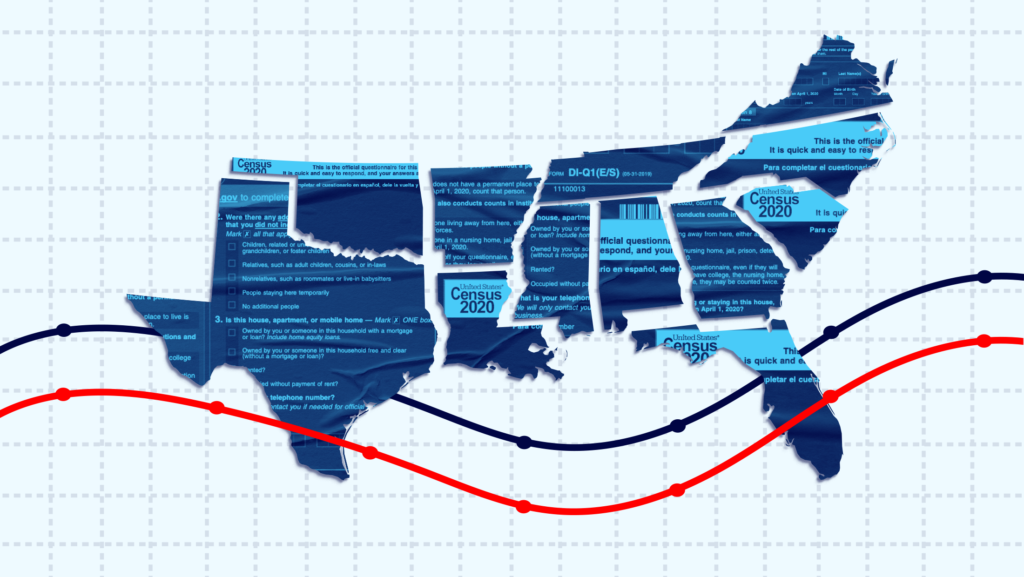Voting Rights Battle in the South Depends on the Census

The Southern Poverty Law Center (SPLC) released a wide-ranging report last month on the challenges faced by southern voters last election cycle. Among their highlighted factors to consider as significantly affecting the voting rights landscape was the census — and what it means for the next 10 years.
The census is a hugely important foundation of our democracy. An accurate population count allows for fair apportionment of representation, lets the federal government know where to send resources in case of a disaster and determines the make up of congressional districts. Undercounting, the most likely shortfall of census collection efforts, is most likely to exclude children, people of color, working class folks and renters — and thus dilutes their political power. In the South, which is shaping up to be an electoral battleground over the next decade, an accurate census is particularly urgent.
SPLC’s report identifies three key concerns about the 2020 census that people worried about the future of voting rights should keep their eyes on.
Here are the key takeaways.
1. COVID-19 made reaching non-respondents and those living in “group quarters” extremely difficult.
The pandemic wreaked havoc on census data collection efforts, especially in-person counting focused on people living in group settings and those who did not respond to their initial census survey mailing. “Group Quarters,” a category that usually gets its own dedicated canvassing effort, covers people living in nursing homes, college housing, and prisons and jails, among other locations. Because of COVID-19, access to these facilities became limited and traditional data collection efforts were delayed or, in the case of universities that sent students home, derailed altogether.
The U.S. Census Bureau worked with universities and colleges to fill in gaps in their data, but they relied on online reporting systems that only half of schools in the country opted into. The implications for voting rights and representation are clear — college students, already a target of Republican suppression efforts and often the lowest turnout demographic, face another challenge having their voices heard if undercounted in the census. The compounding effect of COVID-19’s disruptions of the census also affects those serving time in correctional facilities, many of whom may permanently lose their right to vote due to state felon disenfranchisement laws.
2. Natural disasters further hurt counting efforts in the South.
A particularly unrelenting hurricane season in the South hit Louisiana especially hard, and the state fell to last in the country in census response rate. While usually there would be time to make up for natural disaster delays with in-person efforts, the pandemic cut those extra attempts short. Ultimately, Louisiana was doubly harmed by the storms it faced and a disrupted census count. Undercounting or other inaccuracies that may stem from these data collection challenges can have long-lasting effects, like malapportionment of federal resources, especially urgent if another natural disaster strikes. These problems compound and leave some voters less accurately represented than others.
3. Seemingly partisan gerrymandering can disguise racial gerrymandering — and the U.S. Supreme Court doesn’t want to step in.
The most well-known impact of the census on voting rights is its role in redistricting. Every 10 years, lawmakers are required to take the new population information of the new census and redraw their districts to ensure fair representation. Of course, this is not always the outcome. Gerrymandering, the practice of manipulating the redistricting process to benefit elected officials or one particular block of voters, is widespread. This practice can take many forms — splitting up blocks of voters to dilute their voting power, or “packing” minority voters into one district to limit the number of seats in which their vote would have an impact. In the South, where census disruptions disproportionately affected the counting of already underrepresented and minority groups, the damage wreaked by COVID-19 on 2020’s count will affect representation not just this year, but for the next decade.
Racial gerrymandering has faced crackdowns by both the courts and the federal government. The 1982 version of the Voting Rights Act (VRA) provided guidance for state legislatures to help determine if a redistricting plan was racially discriminatory, informed by the state’s history of racist election laws, the demographic of candidates that emerged victorious and more. The Supreme Court, in an unanimous decision in the case Thornburg v. Gingles (1986), upheld the VRA’s vote dilution standards and added even more guidance to help states prevent drawing discriminatory districts.
However, in the decades since, the process of unfair redistricting has been presented as partisan gerrymandering — a political issue, not a racial one, that the Court has claimed is beyond its reach. In many places, especially in the South, the electoral effect of racial and partisan gerrymandering are the same — Black voters in southern states disproportionately favor Democrats, make up a significant portion of the electorate and have some of the highest turnout rates of any demographic. Partisan gerrymandering efforts to protect Republican officials would have a clear racially discriminatory effect, too.
As the South shapes up to be the next political battleground, the impact of the 2020 census on the next decade of elections is a clear and urgent issue for voting rights advocates.